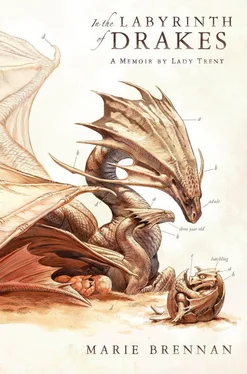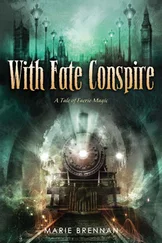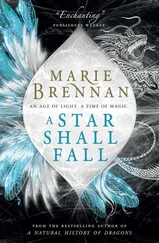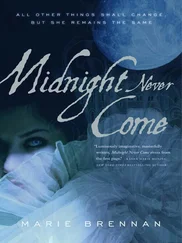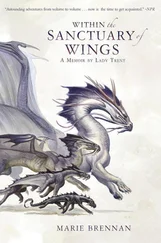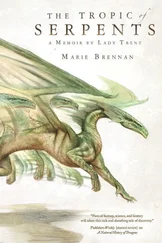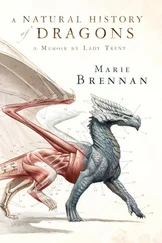One other thing amuses me, looking back on that time. So much attention was focused on the discovery in the Labyrinth of Drakes—and rightly so, for the Watchers’ Heart has never been truly equaled by any archaeological site since (though the city of Jinkai, buried in volcanic mud, comes close). Virtually no one apart from myself and Tom, however, paid the slightest bit of attention to my work with the honeyseekers.
The turning point there came when the winter rains drove us out of the desert at last. Lieutenant Marton had faithfully carried out my orders regarding the egg incubation programme, and came to report to me almost as soon as I returned to Dar al-Tannaneen.
I knew something was amiss as soon as I saw him, for he was wringing his hands fit to dislocate a finger. “What is wrong, Lieutenant?”
“The data,” he said. “That is—one bit of it. A honeyseeker, I mean. One of the honeyseekers. It’s wrong. Not like the others.”
“Has it fallen ill? Which one?” I reached for the files in which I kept all my notes on the hatchlings.
The reference number he gave me, however, was not yet in my files, as it belonged to one of the eggs that had been incubating during my absence. I closed the ledger in front of me and said, “Lieutenant Marton. Take a deep breath, and tell me precisely what is amiss.”
He obeyed, straightening his shoulders. “I did as you asked, Dame Isabella, increasing the temperature. Well past the point where I expected all of them to die. But one of the eggs hatched anyway. And the thing that came out of it is—different.”
My chair nearly toppled over as I stood. “Show me.”
* * *
I saw immediately what Lieutenant Marton meant. Had I encountered this hatchling in the wild, I would have thought it very similar to a honeyseeker, but not quite the same. A related species, perhaps. Female honeyseekers are a dull green, and their mates black-and-yellow, with a bright blue crest; this one was female and had a similar shape to her body, but her scales were solid orange. Her body was even more attenuated than usual for her kind, and sported a much finer crest. All in all, she was not nearly so mutated as Lumpy—in fact, she seemed quite healthy—but she was, as Lieutenant Marton had said, wrong . This was not what a honeyseeker should look like.
Earlier in this volume I said I was eliding a certain incident whose significance was not apparent to me at the time. My mind returned to it now, in light of this new data.
Some months before, one of the hatchlings had become vexed at me for manipulating his body to obtain measurements of his growth. To express his annoyance, he had spat on me—the defense mechanism of honeyseekers, which acquires its toxicity from the eucalyptus nectar they consume.
Their saliva is not very toxic. It is neither as choking as a swamp-wyrm’s breath, nor as corrosive as the spray of a savannah snake. But it can irritate the skin, causing an unpleasant rash, and so I had hurried to wash the affected skin (leaving the honeyseeker to enjoy a brief freedom, before I returned and finished my measurements). Afterward, though, I noted that my skin was not even a little red.
“Lieutenant Marton,” I said. “How many times have the honeyseekers spat on you?”
He looked puzzled. “I don’t know, Dame Isabella. A dozen times, at least. Probably more.”
“How much has it irritated your skin?”
“It doesn’t bother me, Dame Isabella,” he said stoutly. “So long as I wash it off within a few minutes, I don’t have any problems.”
A few minutes was long enough for the full rash to set in, and even prompt washing leaves one with redness and tender skin. But I needed more evidence than that.
Marton categorically refused to let me use myself as a test subject—even going so far as to roll up his sleeves and take one of the juvenile honeyseekers directly out of my hands. My attempt to reclaim it produced the first test, as it provoked the creature into spitting on Marton’s bare arm. “Might as well do the rest,” he said with a hint of triumph, and reached for the next one.
I gave in. Soon a full dozen honeyseekers had spat on him, and I had written on him with my pen, marking each place where the saliva struck with the appropriate reference number. Half an hour later, there was no effect from any of them.
“Maybe it’s because we’re keeping them in cages?” he speculated.
“That should not matter,” I said. “We are still feeding them eucalyptus nectar. It should show up in their saliva.” (Had I been in less of a rush to test my theory, I might have been wiser and asked Tom to chemically analyze samples, rather than using Marton as my canvas.) “And that does not explain your orange honeyseeker, either.” The creature had hatched despite being subjected to temperatures that ought to have been lethal.
Nor were those the only anomalies. I went back through my records, examined each juvenile closely; I thought about the swamp-wyrm eggs that had been transplanted to the rivers of Bayembe. Some had failed to hatch, and others had hatched unhealthy specimens, just as we experienced here at Dar al-Tannaneen. But the ones that had been healthy, the ones that had grown…
They had been different, too.
I showed the orange honeyseeker to Tom and Suhail, laid out all the data I had. It was not nearly enough for a strong theory, and I had learned my lesson about publishing ideas before I thought them through sufficiently—but I trusted those two men above anyone in the world. They would not mock me for getting something wrong. I took a deep breath and said, “I think dragon eggs are not merely sensitive to handling. I think the environment in which they incubate actively changes the organism that results.”
Tom was examining the orange honeyseeker from every angle, ignoring her furious spitting. “You think they aren’t toxic because they didn’t incubate in nests of eucalyptus leaves.”
“I didn’t want to strip the sheikh’s trees bare. We’ve been using tamarisk leaves—I didn’t think it would make a difference.”
I was not the only person in this enterprise who lacked caution. Tom wiped some of the spittle from his arm and tasted it. He made a face. “Salty.”
Suhail’s eyes went very wide. “Tamarisk trees can take up salt from groundwater.”
“Swamp-wyrm eggs in clear, running water,” I said. “Rather than the silty morass of Mouleen. We already know the Moulish change the egg’s environment to influence the sex of the creature that results; Mr. Shelby says that works with some reptile eggs, as well. He says it is based on temperature. What if, with dragons, it can affect more than sex?”
“That,” Tom said, “would be a hell of a thing to study.”
It would require an absurd number of eggs. If the honeyseekers were anything to go by, not all mutations worked out well; many were lethal. One would lose a great quantity before one had anything like a stable breed of orange, salty honeyseekers.
But on a long enough timeline, it might be possible. And who knew how many centuries the Draconeans had spent on dragon-breeding, gradually shepherding wild stock toward something of their own making?
“When you think about it,” Suhail said after I expressed this thought, “it isn’t that much different from what we have done in breeding livestock. A great deal of the selection happens earlier in the life cycle, is all. And the rate of change is, shall we say, more dramatic .”
I could not help smiling at him. “I see our discussions in Coyahuac about animal domestication left a mark on you. Let me officially recant what I said then: I am now firmly of the opinion that they did domesticate dragons. A breed they created through altering the environment of the eggs; a breed that has since gone extinct, or else mutated beyond easy recognition—for it is likely that whatever they made was unfit to survive on its own. Oh, if only we had a proper skeleton to study!”
Читать дальше
